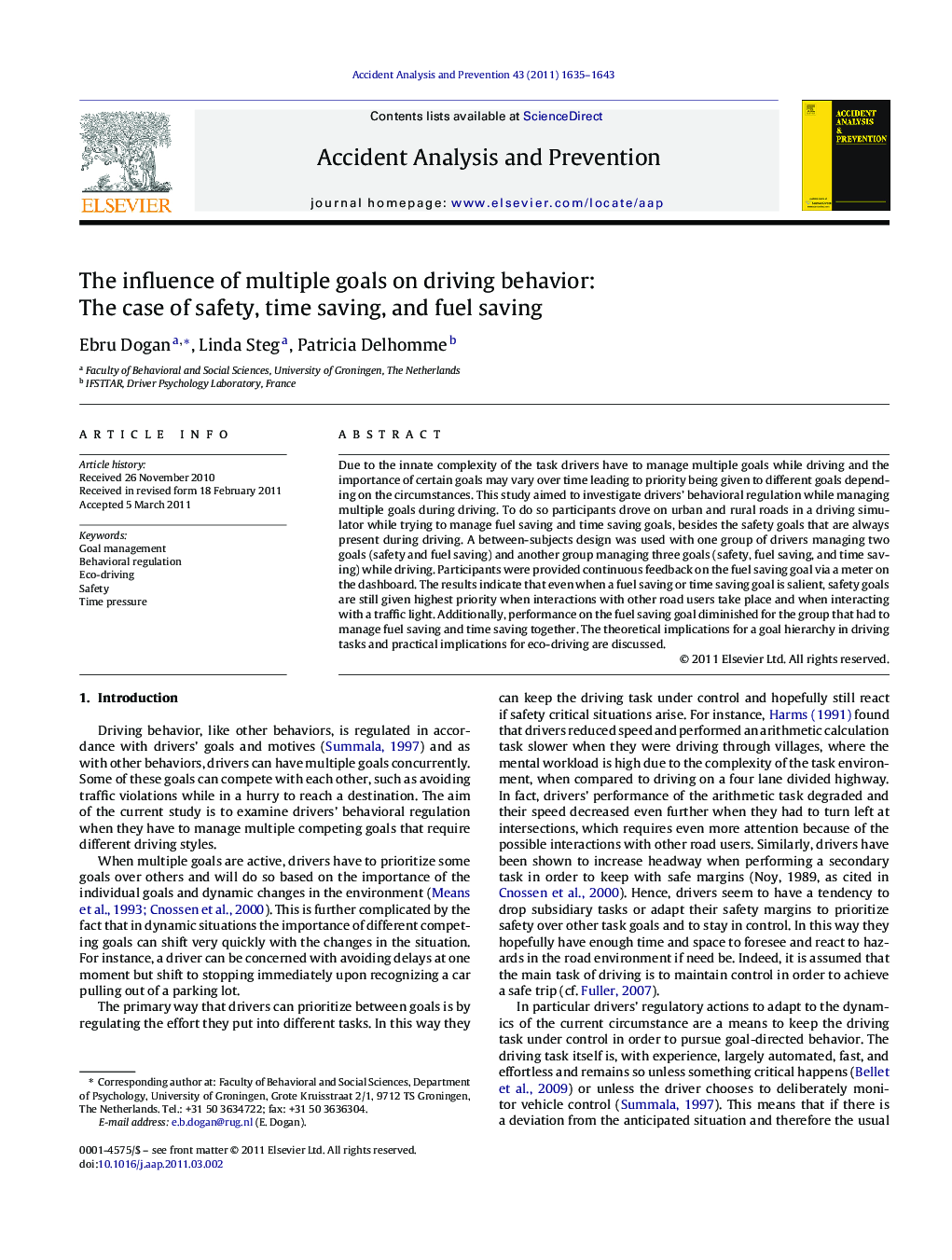| Article ID | Journal | Published Year | Pages | File Type |
|---|---|---|---|---|
| 572866 | Accident Analysis & Prevention | 2011 | 9 Pages |
Due to the innate complexity of the task drivers have to manage multiple goals while driving and the importance of certain goals may vary over time leading to priority being given to different goals depending on the circumstances. This study aimed to investigate drivers’ behavioral regulation while managing multiple goals during driving. To do so participants drove on urban and rural roads in a driving simulator while trying to manage fuel saving and time saving goals, besides the safety goals that are always present during driving. A between-subjects design was used with one group of drivers managing two goals (safety and fuel saving) and another group managing three goals (safety, fuel saving, and time saving) while driving. Participants were provided continuous feedback on the fuel saving goal via a meter on the dashboard. The results indicate that even when a fuel saving or time saving goal is salient, safety goals are still given highest priority when interactions with other road users take place and when interacting with a traffic light. Additionally, performance on the fuel saving goal diminished for the group that had to manage fuel saving and time saving together. The theoretical implications for a goal hierarchy in driving tasks and practical implications for eco-driving are discussed.
► We investigate the influence of safety, fuel saving, and time saving goals on driving. ► We examine regulatory actions to balance these goals using an eco-driving task. ► Safety goals are prioritized in interactions with other road users. ► Fuel saving goal is disregarded under time pressure, regardless of its salience. ► Eco-driving style is overlooked when in conflict with safety and task demands.
